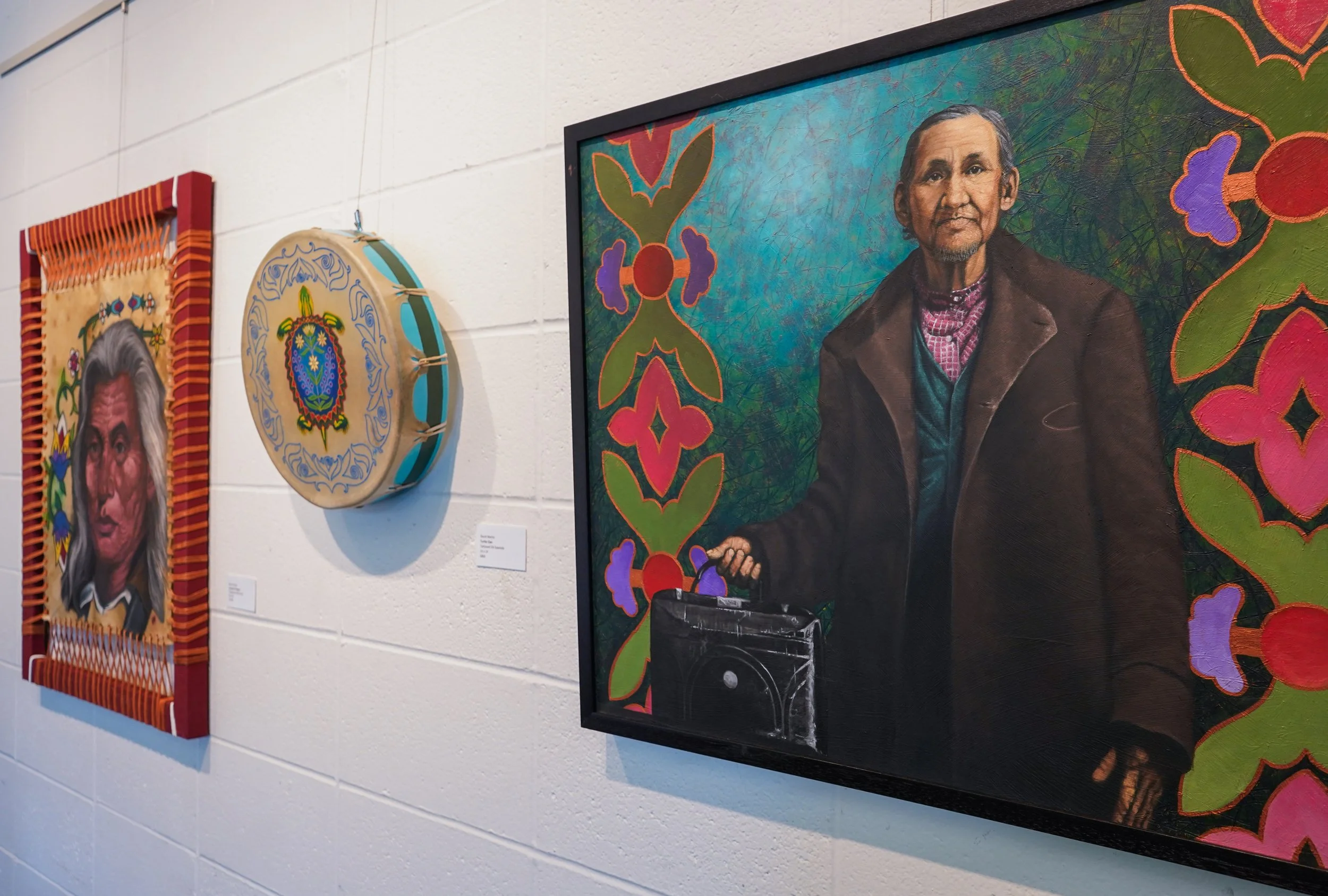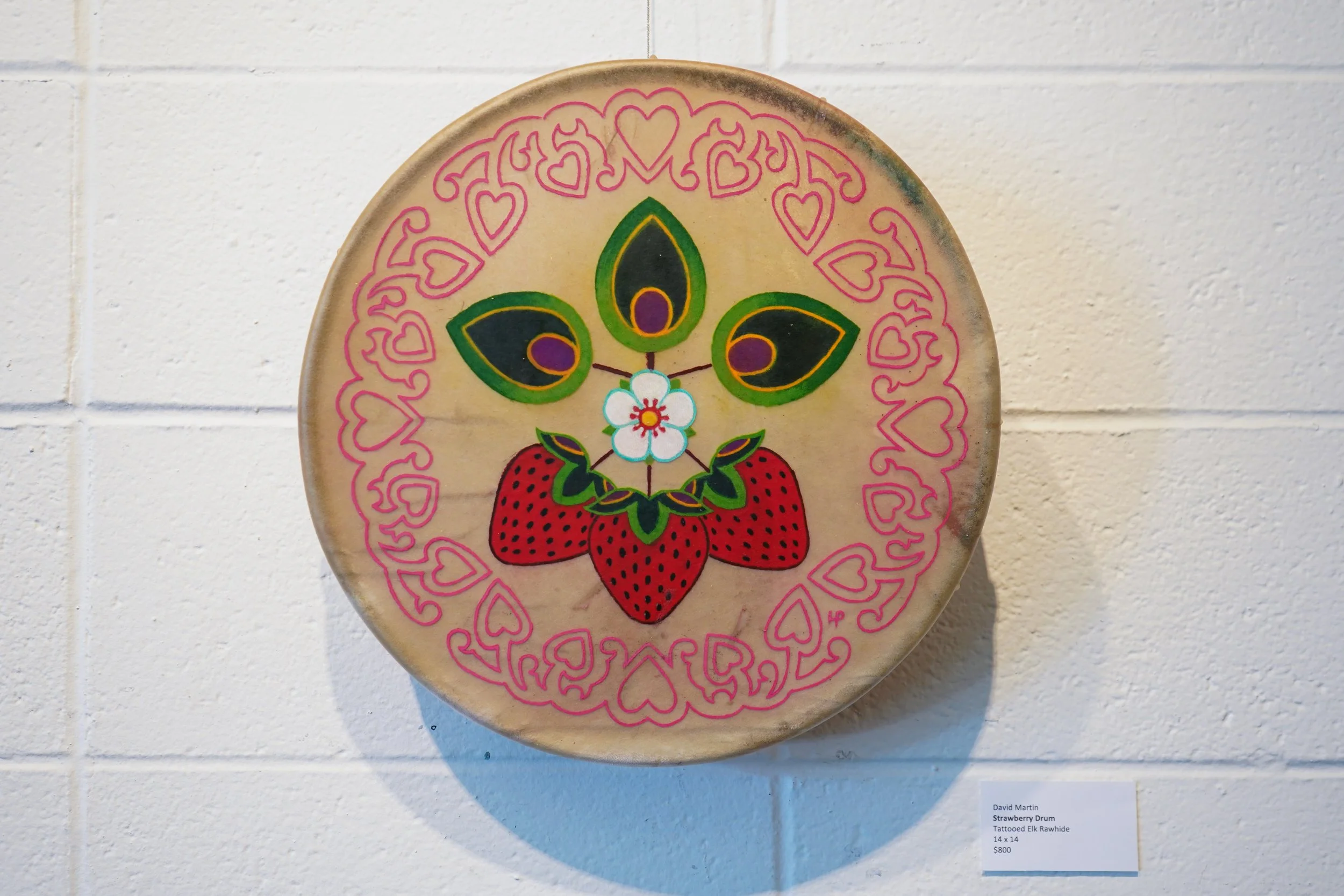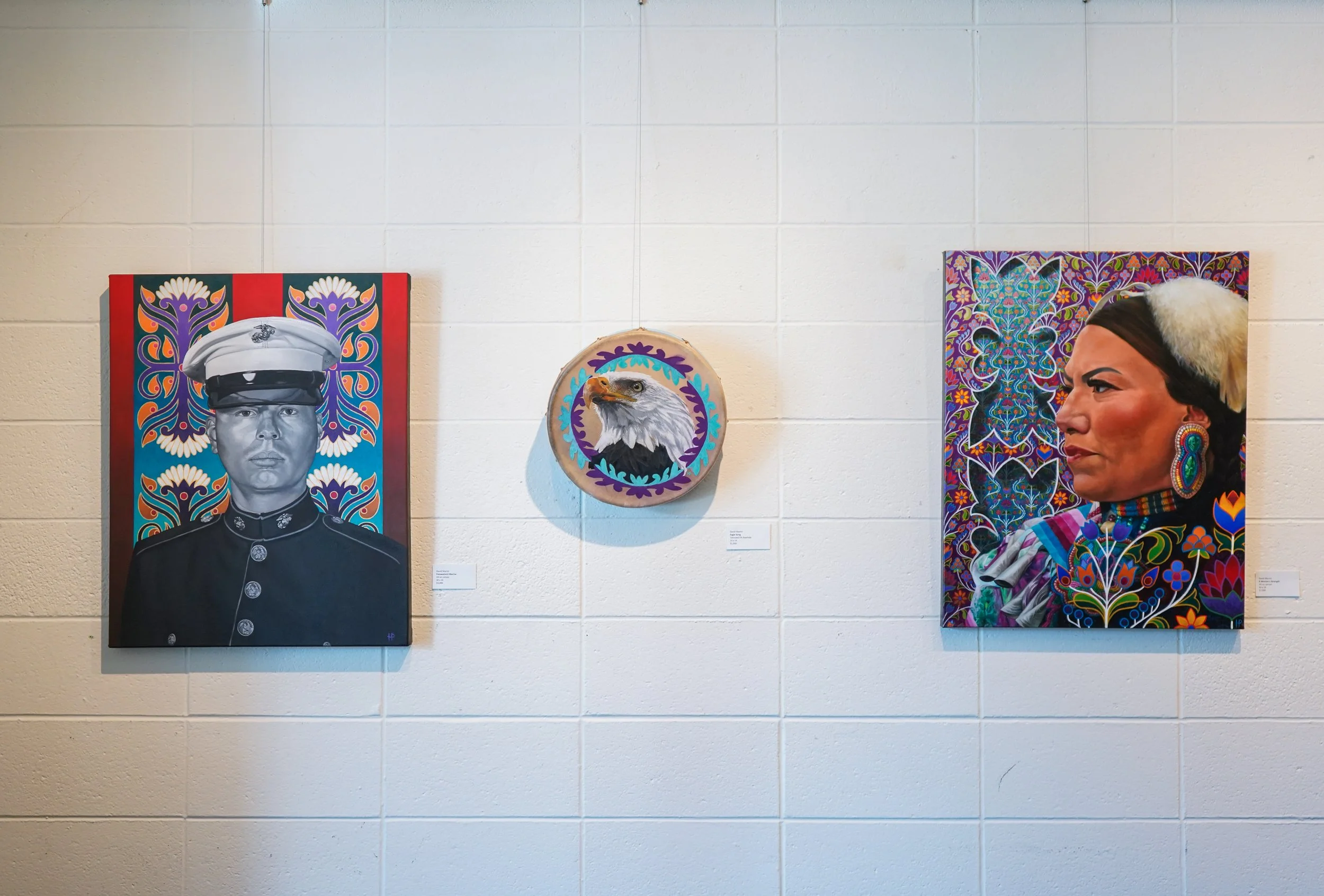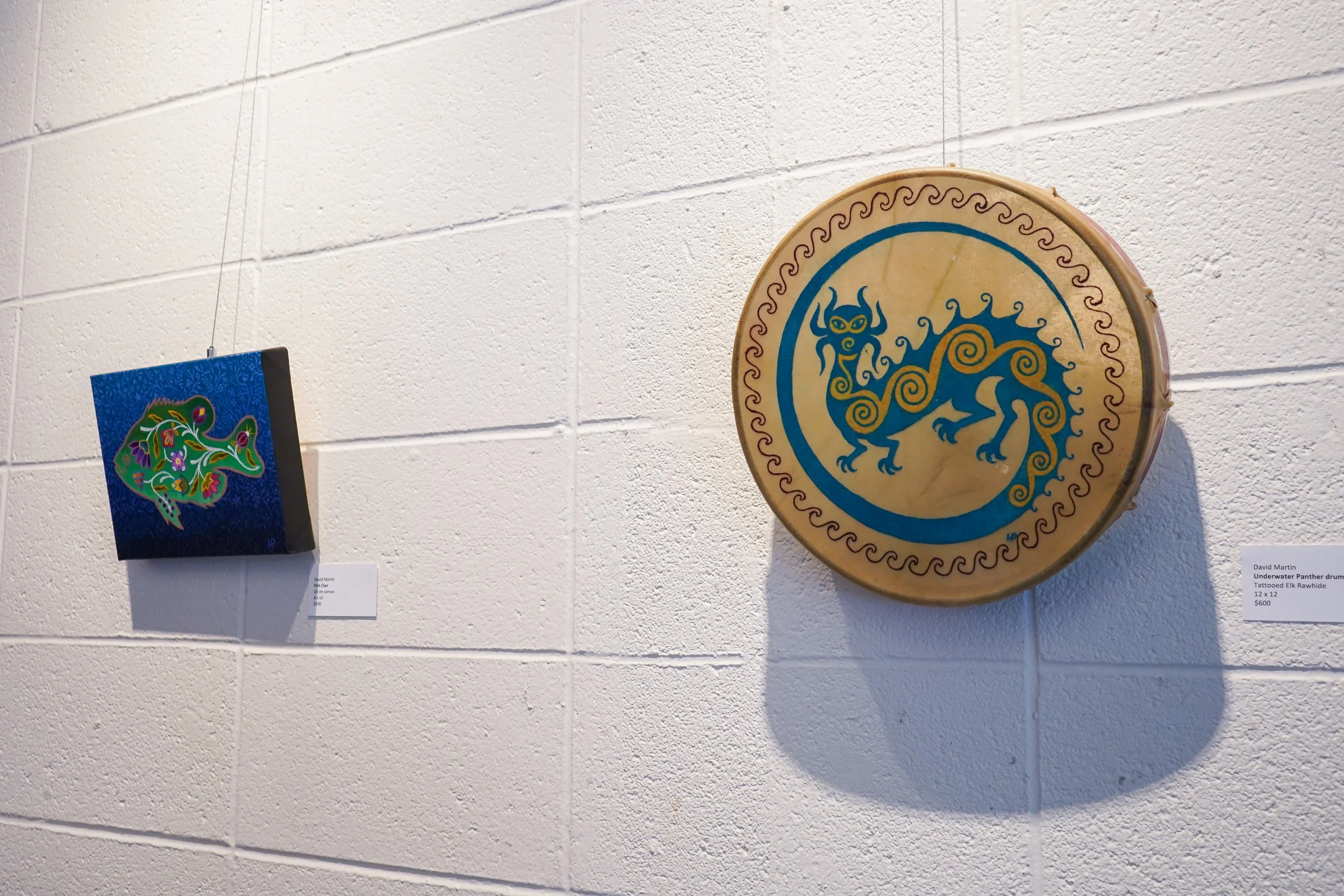Potawatomi "A Woodland People"
For centuries, Native Americans have been misrepresented in both media and history, and stereotypes and misconceptions imposed by non-Native people don't reflect the diversity of Native communities. David Martin, artist and citizen of the Pokagon Band of Potawatomi Indians, explains, "Not every tribe lived in teepees. Not every tribe wore Plains headdresses." His work purposefully resists these assumptions and offers "a good teaching moment" where he can "share an undiluted version of [his] culture with non-Natives used to viewing more mainstream Native art." Martin focuses on authentically representing the Potawatomi people.
At the heart of who Martin is as an artist is a deep commitment to preserve and share his Potawatomi culture. "One of my goals as an artist is to document my people and contribute to our history," he says. And this purpose shapes every step of his creative process—especially the start. Before beginning a new piece, he asks himself, "What will the effects on my people be when it is seen and discussed? What does it contribute? … I want to make sure what I do is expressly Potawatomi."
One way Martin does this is through portraiture. The first piece I saw of the show was Simon Pokagon. Martin explained that Simon, the son of Leopold Pokagon (also featured in this show and the patriarch of the Pokagon Band of the Potawatomi), was a very important, and at times divisive, historical figure. Simon spoke at the 1893 World's Columbian Exposition in Chicago and was one of the first Native American writers; his books are still in print today. He wanted unity among people while also challenging colonization and its lasting impact on Native communities.
Like many artists, Martin's style and mediums have evolved. His creative journey has taken him through beadwork, making dance regalia for Native American dancers, tattooing (as the founder of Bicycle Tattoo in Downtown South Bend), and painting with linseed oil. His transition to painting in 2007 came from a desire to express himself more than he could through tattooing other people's skin. But when he began attending Native Art Markets in 2023 as a painter, he felt that, despite his content, his work didn't stand out. These realizations collectively led him to an alternative form of tattooing, and he began applying his tattoo skills to rawhide, deepening his connection to his art and cultural identity at the same time.
I wondered what the most rewarding aspects of being an artist were to Martin, and he told me about tattooing Native drums—something he shares he's the first to do! What excites him most is that anyone can own these pieces. They're functional pieces of art that can be used spiritually and culturally. Other artists have already started to explore the techniques, too. "It makes me feel good to think I may have contributed to a new tradition that can be adopted by other tribes. It is very humbling."
This Native American Heritage Month and beyond, I encourage you to question your assumptions and perceptions of Native Americans. Seek the truths revealed through the work of Native artists like David Martin. Notice "the freedom of expression" in their art, and let it declare to you, as Martin says, "how far [Native people] have come from being on the brink of extinction as a culture and people."




